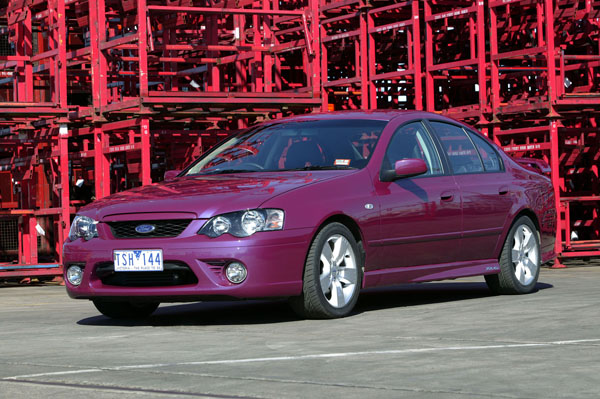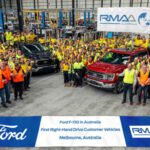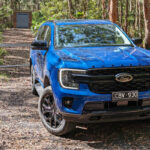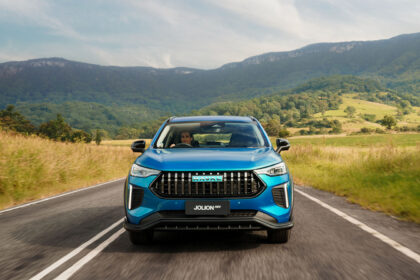Used Ford Falcons have long been favourites on the used car scene, especially with those living in the great Aussie bush. They are ruggedly built, seem to last forever if driven and serviced correctly, and soak up rough and ready backroads and dirt tracks much better than overpriced machines from Germany and the UK.
Most Falcons are four-door sedans, station wagons and utes. Two-door hardtops and panel vans were also built back in the old days that are beyond the scope of this article.
Ford Falcons have seating for five adults, but four makes more sense because the transmission tunnel takes up a lot of footroom in the centre-rear position.
The sedan’s boot is relatively shallow, but it’s easy to load thanks to a good-sized opening. From the BA Falcon model onwards things are better, though the boot’s still on the shallow side.
Falcon station wagons are built on a longer wheelbase than the sedan. They have a long, wide, practical cargo area. When Falcon was starting to drop off in the sales race Ford made the decision to keep using the rear end of the old AU station wagon in the BA series. As a result there’s no FG wagon. Instead, it created a Series III BF model to sell alongside the FG sedans. Getting on in years, it wasn’t a success and the final Falcon station wagon was built in 2010.
Want a Falcon wagon from 2010 onwards? Ford Territory was based on the Falcon and shares some petrol powerplants. Trouble is it’s not as voluminous as the good-old Falcon wagon.
Handling of the Falcon is surprisingly sharp for its size and it holds on when cornering at speeds much higher than is likely to be attempted by most drivers. Obviously the sports models may be driven harder than the standard ones, but usually by drivers who care about car control.
Ford’s six-cylinder engines in this period all have a capacity of 4.0 litres, but come in several formats, including turbocharged units.
An interesting variant on the six-cylinder is a dedicated LPG engine. Common in taxis, though less so in private cars (except in Victoria) the factory built editions of this engine are all but indistinguishable from a petrol unit to drive. The LPG engine is significantly thirstier than the petrol so fuel range suffers.
The V8 engine from the BA Falcon onwards, had a capacity of 5.4 litres, later reverting to 5.0 litres. The 5.0 has significantly more technology, provides plenty of grunt, best of all it makes the right noises. A supercharged Boss V8 was introduced in the XR8 late in 2014, a brilliant powerplant that being sadly missed.
The EcoBoost Falcon followed the European engineering route (think Audi, BMW, Jaguar, Mercedes, et al) of having a smallish turbocharged four-cylinder powerplant. The Ford unit has strong performance and the nimble handling due to the lighter weight over the front wheels has endeared the to those are open minded.
The Falcon EcoBoost didn’t have the sales success it deserved and you may be able to pick up a real bargain on the used-car scene.
Four-speed automatic transmissions were gradually phased out and replaced by far better six-speed units, starting in 2004 with the upmarket models and gradually making their way into the rest of the range. The dedicated LPG models had a four-speed auto until the introduction of the FG series in 2011.
Manual gearboxes are rare and probably best avoided in all but the sporting models as they can affect resale value. The manual was a five-speed until the BF series, when a six-speed was installed.
Prices for spare parts, servicing and repairs are pretty reasonable and there are Ford dealers just about everywhere in Australia.
Most spare parts are readily available, perhaps not from the corner milk bar as suggested by mythology, but in many outback areas. Some parts on older cars may have to come from a recycler.
These big Fords are relatively simple to work on, with plenty of underbonnet and undercar space. Having a workshop manual makes a lot of sense if you’re doing work for the first time.
Insurance prices are generally reasonable and premiums for the everyday models are at the lower end of the scale. It may cost more to cover a V8 Falcon than a straight-six, and you are likely to be asked to pay more for a turbo six, though not a turbo four.
Shop around for insurance deals, but make sure you understand the cover being offered. And be aware that jumping from insurance company to company could jeopardise matters is there’s a marginal claim.
WHAT TO LOOK FOR
Many thousands of used Falcons will have been taxis at some time in their life. Be wary of one running on dedicated LPG; while these are quite common in Victoria, they are comparatively rare elsewhere in Australia.
Signs of an ex-taxi are vinyl trim, rather than cloth or leather, severe wear both inside and out, holes where signs and a taximeter have been removed, and possibly a paint respray.
Check the cabin for damage caused by bored kids. In station wagons have a good look at the load area for signs of commercial use.
Reluctance for an engine to start may be a sign of excessive wear. As is smoke from the exhaust and the oil filler cap when the engine is revved after it has been idling for more than about a minute.
Four-speed automatics can cause problems on hard-driven cars, especially if they have done a lot of work. Check they change gears cleanly and don’t hunt up and down through the ratios. Be suspicious of one that’s slow at going into Reverse of Drive from Neutral or Park.
Rust is all but unknown in the later generation Falcons being studied here. If you do find any it’s likely it has been been crashed and badly repaired.
HOW MUCH?
Expect to pay from $3000 to $6000 for a 2005 Ford Falcon XT; $6000 to $9000 for a 2007 XR8; $8000 to $13,000 for a 2010 G6 Turbo; $11,000 to $16,000 for a 2011 XR6T; $14,000 to $20,000 for a 2012 XR6T; $15,000 to $21,000 for a 2016 Ecoboost; $16,000 to $23,000 for a 2013 G6 E; $25,000 to $34,000 for a 2014 XR8; and $32,000 to $43,000 for a 2016 XR8 Sprint.
CAR BUYING TIP
A quick way to judge the history of any car is to look in the boot and at the paintwork around it. Damage caused by heavy-duty use and/or careless loading can be enough to put you off.














